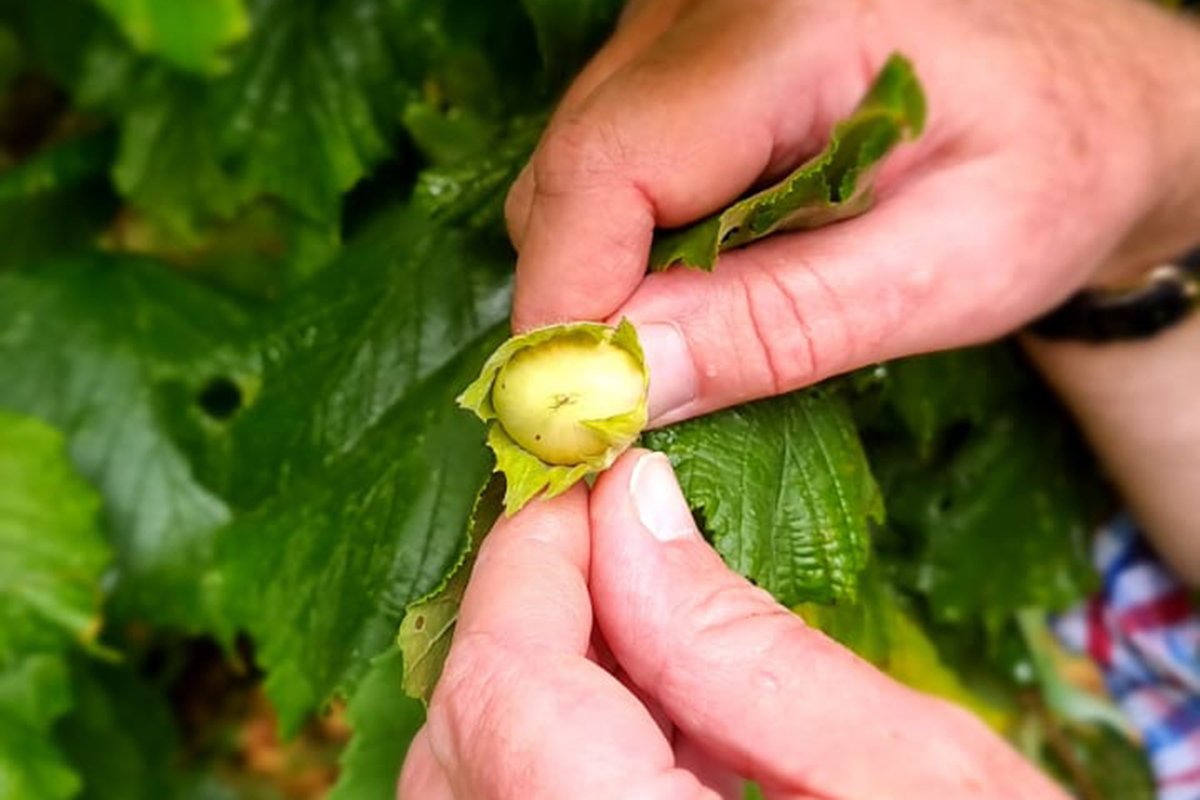Potash Farm
This beautiful farm in West Kent grows the finest cobnuts, with the harvest starting in August each year. Cobnuts are a type of cultivated hazelnut and now feature of many top menus. “They are the only really fresh nut which are picked and grown in this country at this time of year,” explains Alexander Hunt of Potash Farm.
Marcus Rowlerson from Le Marche with Alexander Hunt of Potash Farm
Demand is booming for cobnuts. “It’s enormous – never been greater,” explains Hunt. This is partly explained by a move to eat less meat and animal fats but must be put in context of a decline in cultivation of cobnuts. Around 7000 acres were cultivated at the turn of the century; this has declined to around 250 acres today. (Fyi, a cobnut orchard is called a ‘plat’.The Kentish cobnut was bred in 1830 by a Mr Lambert of Goudhurst in Kent and is larger in size than a typical hazlenut.)
For chefs, the key consideration is which ‘type’ of cobnut you choose to use. At the start of the season, they are sold ‘wet’ - i.e. freshly picked, with a green husk and a milky and refreshing texture. These green cobnuts have a higher moisture content and a mild flavour. They are picked from mid-August to the end of August and to be eaten as fresh nuts within 6-8 weeks. Try them with a pinch of salt!
The next stage are golden cobnuts - far more versatile in the kitchen. “These are when the green husks start to go to golden – these are picked in September when the green nut starts to turn brown,” explains Hunt.
Golden cobnuts have more flavour that green cobnuts. “Once they are bit more mature they have a woody nuttiness - that is when they come into their own.” Hunt recommends golden cobnuts for salads and other dishes where you might scatter nuts on top.
The final stage is when the cobnuts are dehusked. Dehusked cobnuts are the dried nuts and what Hunt uses for a range of products such as cobnut fudge, biscuits and cakes. They have a very full flavour and can be kept at ambient temperature for up to 2 years.



